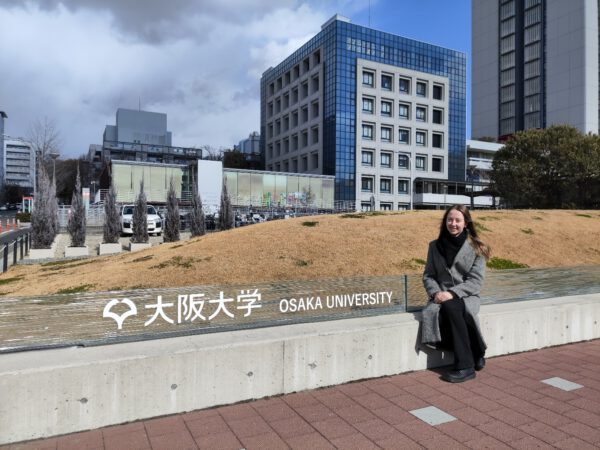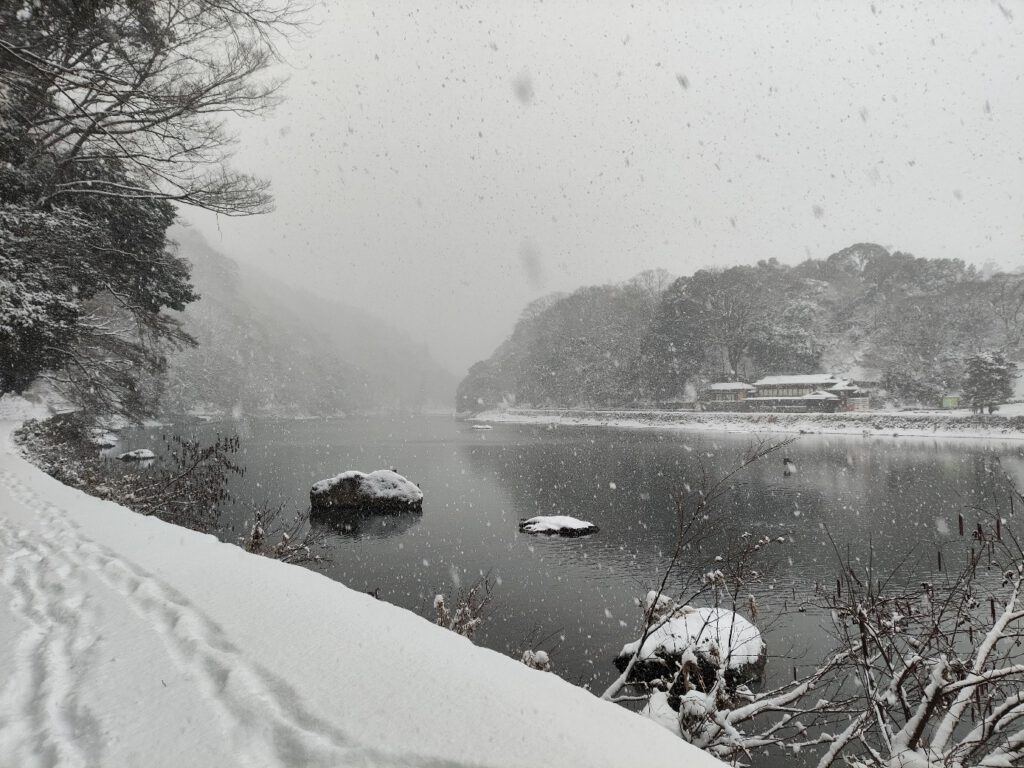
From February to April 2025, Patricia Sonnenberg (CRC 1333 researcher at the Macromolecular Institute of the Albert-Ludwigs-University Freiburg, Project B07) visited Professor Masaoka and his team at the Division of Applied Chemistry at Osaka University as part of an international research stay funded by the CRC 1333.
In the CRC 1333, all doctoral and postdoctoral researchers have the opportunity to receive additional funding for a research stay abroad up to three months by applying to the CRC board. The aim is to promote the international competence and early independence of our early-career researchers.
The Masaoka group is prominently known for the development of novel functional materials and catalysts that enable innovative approaches for energy conversion and sustainable chemical processes, including artificial photosynthesis and CO₂ reduction.
The aim was to compliment the ongoing research of anchored molecular catalysts on ordered mesoporous carbon materials (Fe-por@OMC) for electrochemical CO2 reduction reactions (eCO2RR), carried out in collaboration with the Sarkar and Klemm group, by incorporating the metal catalysts of the Masaoka group. These catalysts are of particular interest to the CRC 1333 for advancing the understanding of the confinement effect.
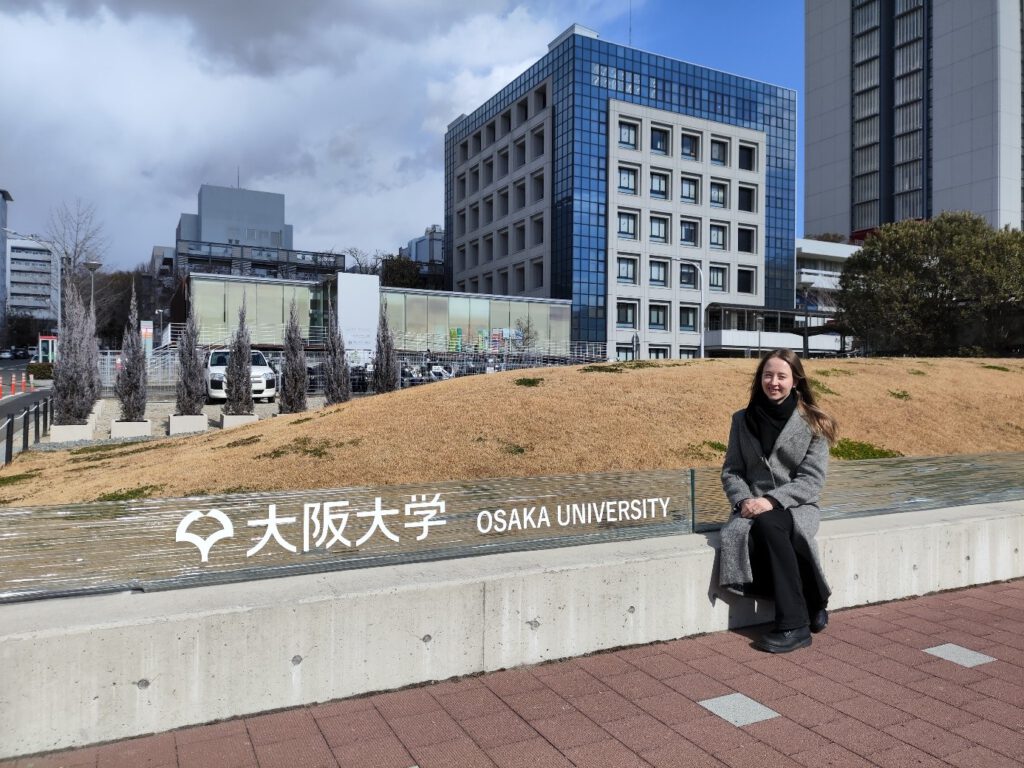
In an interview, Patricia gave us some insights into her stay:
What was special about the work of the Masaoka Group?
Their expertise in metal catalysts, as well as electrochemical and photocatalytic reactions, provided valuable insights, which helped deepen my understanding in this area.
I also noticed that the structure and meeting culture was different from what I was used to. Due to the size of the group, research meetings were held separately in smaller groups, selected by topic. Additionally, each week, two members gave a literature presentation, also known as ‘lunch meeting’.
Beyond the scientific work, I was warmly included in the group’s social activities, from graduation to farewell parties, and had the chance to experience unique cultural traditions, such as the White Day.
How did you like Osaka? What were some highlights for you?
Staying in Osaka was a great experience. Not only is the city close to Kyoto, the cultural capital, but it is also close to several other major cities, making it easy to explore. Surrounded by forests, hills and the sea, it offers a beautiful natural environment alongside urban life.
The Osaka University campus is spacious and green, and the canteen food was really good. During my stay, I experienced everything from heavy snowfalls to the cherry blossom in spring.
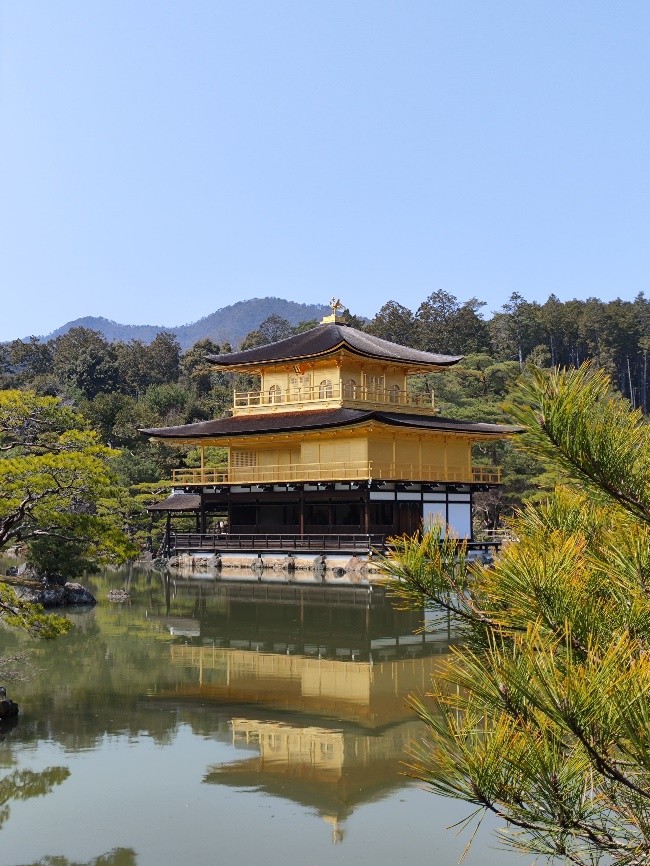
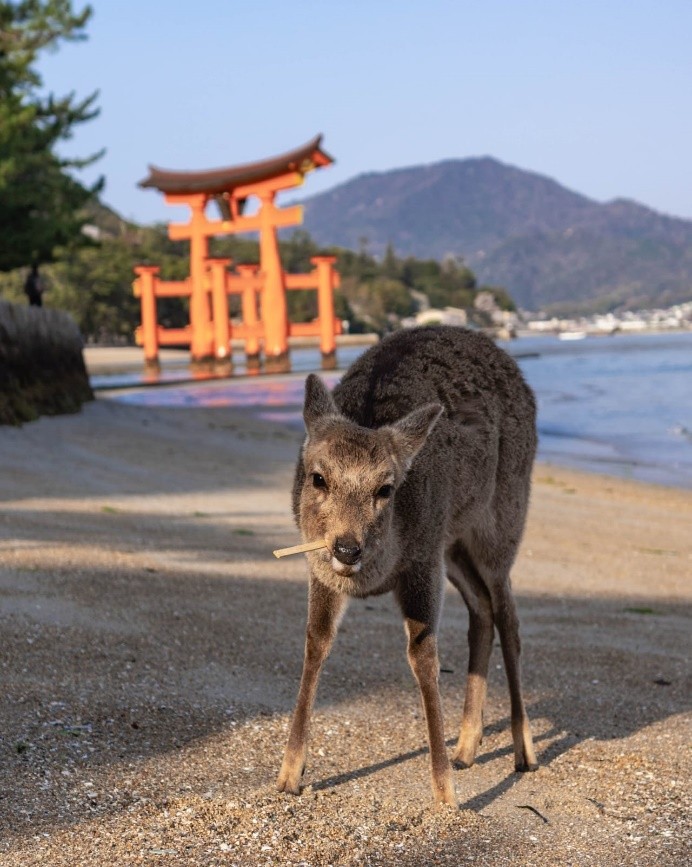
Do you have any recommendations for someone looking to do a research stay?
To ensure a smooth and efficient start to the research stay, it’s helpful to prepare in advance. Doing preliminary work at home can save valuable time. If synthesis is involved, check whether all required materials are available and confirm the exact quantities needed.
Additionally, learning even a little of the local language beforehand proved to be a game changer. It greatly helped with the language barrier.
Thank you for all the insights, Patricia!
